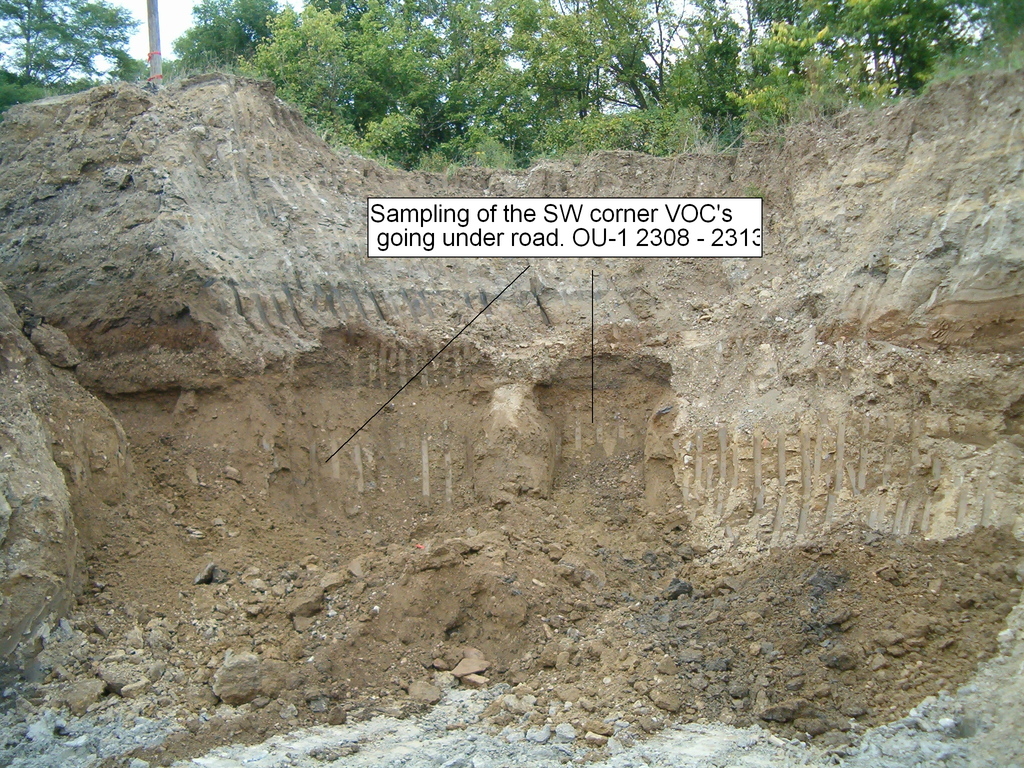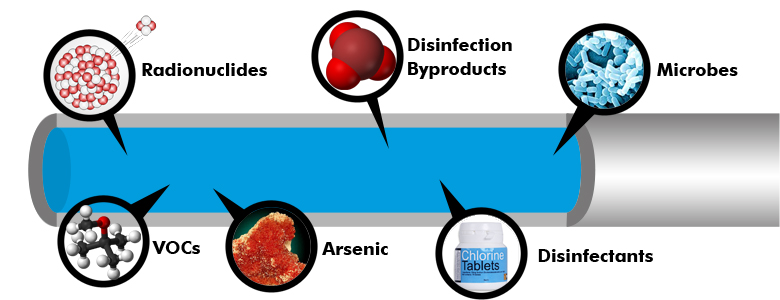Brush strokes dance across the canvas, hues intertwining to create a masterpiece. The familiar scent of fresh paint fills the air, awakening a sense of excitement and possibility. But hidden within this aromatic embrace lies a silent threat that often goes unnoticed – volatile organic compounds, or VOCs. These unassuming chemicals, found in abundance in paints, can be harmful to our health and well-being. In this article, we shall explore the hidden dangers posed by VOCs in paint and delve into why we should be cautious when stepping into the colorful world of home improvement. So, grab a brush, but first, let us uncover the invisible villains compromising our indoor sanctuaries.
Table of Contents
- The Insidious Threat: Understanding the Harmful Effects of VOCs in Paint
- Behind the Toxic Fumes: Unveiling the Adverse Health Impact of VOCs
- Practical Tips to Minimize Exposure to VOCs in Paint
- Creating a Safer Home Environment: Choosing Low-VOC Paints
- Q&A
- To Wrap It Up

The Insidious Threat: Understanding the Harmful Effects of VOCs in Paint
How VOCs in Paint Pose a Sneaky Danger
When you’re looking to spruce up your home with a fresh coat of paint, it’s easy to overlook the hidden dangers lurking in that seemingly harmless can of color. Volatile organic compounds, or VOCs, are chemicals found in many household paints that can have harmful effects on your health and the environment over time. Understanding the insidious threat posed by VOCs is crucial in making informed decisions to protect yourself and your loved ones.
First and foremost, VOCs can contribute to poor indoor air quality. These chemicals, released as gases from paint, can contaminate the air you breathe, leading to respiratory problems such as asthma, allergies, and even long-term damage to your lungs. The impact is not limited to your immediate surroundings but extends beyond your walls, as VOCs emit harmful pollutants into the environment, contributing to outdoor air pollution as well. Moreover, VOCs are known to have adverse effects on our ozone layer, exacerbating the issue of climate change.

Behind the Toxic Fumes: Unveiling the Adverse Health Impact of VOCs
Understanding VOCs: A Hidden Threat to Our Health
When we think of air pollution, our minds often jump to images of smog-filled cities or billowing factory smokestacks. However, there is a silent, invisible danger lurking in our indoor environments – Volatile Organic Compounds (VOCs). These harmful substances are emitted as gases from everyday items in our homes and offices, including cleaning products, furniture, paint, and even carpets. Despite their inconspicuous nature, VOCs pose a significant risk to our health and well-being.
In recent years, research has shed light on the adverse effects of VOC exposure, raising concerns about their impact on respiratory health, allergies, and even neurological disorders. Prolonged exposure to VOCs has been linked to eye irritation, headaches, dizziness, and even organ damage. Moreover, some VOCs are known to have carcinogenic properties, posing an alarming threat to our long-term health.
- Did you know that the air we breathe indoors can be up to five times more polluted than outdoor air?
- Common sources of VOCs include cleaning products, personal care items, and air fresheners.
- VOCs can quickly accumulate in poorly ventilated spaces, exacerbating their adverse health effects.
- Are you aware that VOCs can continue to be released from furniture and other items long after they have been purchased?
As we delve deeper into the world of VOCs, it becomes clear that this hidden menace deserves our attention. Understanding the sources, health risks, and effective mitigation strategies will empower us to create healthier indoor environments and safeguard our well-being.

Practical Tips to Minimize Exposure to VOCs in Paint
When it comes to painting your home or office, it’s important to be mindful of the potential exposure to Volatile Organic Compounds (VOCs). These chemicals can have harmful effects on both our health and the environment. Fear not, as we’ve compiled a list of practical tips to help you minimize your exposure to VOCs:
- Choose Low-VOC or No-VOC Paint: Opt for paints labeled as low-VOC or no-VOC, as they contain significantly lower levels of harmful chemicals. These eco-friendly alternatives are readily available and provide equal or better coverage and color choices.
- Adequate Ventilation: Ensure proper ventilation by opening windows and using fans while painting. This will help dissipate any harmful fumes and improve air circulation, reducing your exposure to VOCs.
- Paint in Small, Well-Ventilated Areas: If possible, paint in smaller sections at a time, moving to different areas once they are dry. This approach allows you to keep the area well-ventilated, minimizing the concentration of VOCs in one space.
- Wear Protective Gear: Always prioritize your safety by wearing a mask, goggles, and gloves while painting. This will shield you from inhaling or coming into direct contact with VOCs and any potential allergens present in paint.
By following these practical tips, you can not only safeguard your health but also contribute to a greener environment. Remember, a little precaution can go a long way in reducing your exposure to VOCs and ensuring a healthier space.

Creating a Safer Home Environment: Choosing Low-VOC Paints
When it comes to improving the safety and health of our homes, one often overlooked aspect is the choice of paint we use on our walls. Traditional paints can release harmful chemicals known as Volatile Organic Compounds (VOCs), which can negatively impact both our well-being and the environment. Luckily, there are now low-VOC paint options available that offer a safer alternative. Let’s explore the benefits of choosing low-VOC paints and how they can help create a healthier home environment.
1. Reduced Health Risks: One of the primary advantages of low-VOC paints is their reduced emission of harmful chemicals. By opting for paints with lower VOC levels, you can minimize the risk of respiratory issues, allergies, and other potential health concerns caused by exposure to traditional paints. Creating an environment that promotes good indoor air quality is crucial, especially for those with allergies or sensitivities.
2. Eco-friendly Choice: Aside from protecting our well-being, opting for low-VOC paints is also an environmentally conscious decision. These paints release fewer pollutants into the air, decreasing indoor and outdoor air pollution levels. By reducing VOC emissions, we contribute to a cleaner planet and help mitigate the effects of global climate change.
Q&A
Q: Can paint really harm me? I mean, it’s just paint, right?
A: While paint may seem harmless, certain types of paint contain volatile organic compounds (VOCs) that can indeed pose health risks if not handled properly.
Q: What are VOCs exactly?
A: VOCs are a type of chemical that can easily evaporate at room temperature. They are released into the air as gases from various products, including paint. In the case of paint, VOCs are released as the paint dries, thus polluting the indoor air quality.
Q: How can VOCs in paint harm me or my family?
A: Breathing in high levels of VOCs emitted by paint over a prolonged period can lead to short-term and long-term health issues. Short-term effects include headaches, dizziness, nausea, and eye and throat irritation. Long-term exposure to VOCs from paint has been associated with respiratory problems, central nervous system disorders, and even an increased risk of certain cancers.
Q: Are all paints equally harmful?
A: No, not all paints contain the same levels of VOCs. Some manufacturers have developed low or zero VOC paints, which emit significantly fewer harmful chemicals. Opting for these types of paints can help minimize the health risks associated with VOCs.
Q: Are there any guidelines to minimize exposure to VOCs when using paint?
A: Absolutely! Firstly, ensure that you are in a well-ventilated area while using paint. Open doors and windows or use fans to increase air circulation. Secondly, try to choose low or zero VOC paints that are labeled as such. Lastly, when storing leftover paint, make sure the container is tightly sealed to prevent unnecessary release of VOCs into the air.
Q: Can I detect VOCs in paint without any special equipment?
A: No, detecting VOCs in paint requires the use of special equipment that measures the levels of these compounds. Therefore, it is always advisable to assume that any paint may contain VOCs and take necessary precautions.
Q: How can I safely dispose of leftover paint containing VOCs?
A: Proper disposal of paint is crucial to protect the environment and prevent pollution. Contact your local waste management facility to inquire about their guidelines on disposing of paint. Many regions have specific instructions for handling and recycling paint to prevent VOCs from seeping into the ground or water systems.
Q: Is it safe to use old paint cans hiding in my garage?
A: Paint cans that have been stored for an extended period of time may have deteriorated, leading to increased VOC emissions. It is best to avoid using old paint cans, as the risk of harmful VOC exposure could be much higher. If in doubt, dispose of them properly.
Q: Are there any alternatives to traditional paint containing VOCs?
A: Yes, eco-friendly and organic paints have become more widely available. These paints are made from natural ingredients, minimizing potential exposure to harmful VOCs. Check with local paint suppliers to explore these greener alternatives.
Remember, while painting can be a fulfilling project, it’s important to be aware of the potential dangers associated with VOCs. By making informed choices and taking precautionary measures, you can mitigate the harm that paint may cause to you and your loved ones.
Concluding Remarks
As we conclude our journey into the hidden dangers lurking within the colorful world of paint, it becomes apparent that the allure of a fresh coat may come at a price. The captivating hues that bring life and vibrancy to our walls can also harbor volatile organic compounds (VOCs), silently releasing them into the air we breathe. Yet, armed with knowledge, we can navigate the terrain of paint choices more wisely, protecting ourselves and our loved ones from the subtle perils that lie within.
While it may seem daunting to avoid VOC-laden paints altogether, there are steps we can take to mitigate the potential harm. Seeking out low-VOC or zero-VOC alternatives ensures our spaces remain as beautiful as ever without compromising our well-being. Adequate ventilation during and after painting, coupled with protective gear and a mindful approach, grants us the power to transform our living environments while safeguarding our health.
Indeed, the symbiotic relationship between creativity and caution now becomes apparent. By understanding the potential risks associated with VOCs in paint, we can make informed decisions and unleash our artistic spirit responsibly. Let us remember that the brush and roller are our allies, poised to create masterpieces that elevate our surroundings, not agents of harm.
As we step back to admire the newly clad walls, let us also feel a sense of accomplishment in our conscious choices. In ushering in a new era of paint awareness, we pave the way for a healthier future. The canvas of our homes transforms into a sanctuary where beauty and well-being coexist harmoniously, delighting our senses without compromising our health.
So, dear reader, armed with knowledge, let your brush strokes become an extension of your creativity, while your discerning eye filters out the perils lurking within the paint aisle. Embrace the transformative power of color conscientiously, for in doing so, you not only create striking works of art but also protect the masterpiece that is your health.


